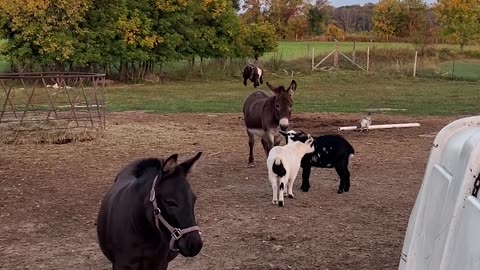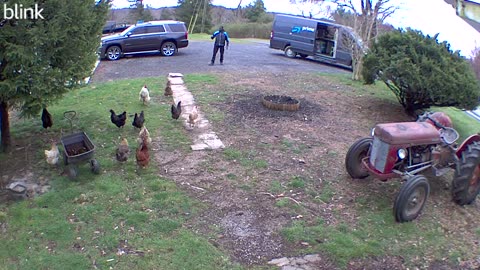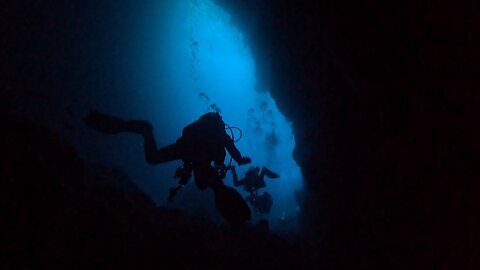
Internet Gold
196 videos
Updated 2 days ago
The videos you didn’t know you needed but now can’t live without!
-
Small Goat Does Parkour on a Donkey
 ViralHogOccurred on August 1, 2025 / Beachburg, Ontario, Canada Info from Licensor: "Cute lil goat doing parkour on a very patient donkey."235 views
ViralHogOccurred on August 1, 2025 / Beachburg, Ontario, Canada Info from Licensor: "Cute lil goat doing parkour on a very patient donkey."235 views -
Dad Helps Dog Look Over Fence
 ViralHogOccurred on December 8, 2025 / Spain Info from Licensor: "My father lifts the dog up to snoop around and see what's on the other side of the yard walls."250 views
ViralHogOccurred on December 8, 2025 / Spain Info from Licensor: "My father lifts the dog up to snoop around and see what's on the other side of the yard walls."250 views -
Stunning Footage of Kilauea Eruption
 ViralHogOccurred on December 6, 2025 / Hawaii Volcanoes National Park, Hawaii, USA Info from Licensor: "Kilauea eruption episode 38, fountains from the south vent are over 1000 feet high and inclined to the south."322 views
ViralHogOccurred on December 6, 2025 / Hawaii Volcanoes National Park, Hawaii, USA Info from Licensor: "Kilauea eruption episode 38, fountains from the south vent are over 1000 feet high and inclined to the south."322 views -
Heart-stopping moment skydiver's parachute gets hooked on plane's tail -- leaving him dangling 15,000 feet in the air
 New York PostHeart-stopping video shows the moment a skydiver's parachute got caught on a plane's tail -- leaving him dangling 15,000 feet in the air. The parachuter was climbing out the door preparing t…1.47K views 5 comments
New York PostHeart-stopping video shows the moment a skydiver's parachute got caught on a plane's tail -- leaving him dangling 15,000 feet in the air. The parachuter was climbing out the door preparing t…1.47K views 5 comments -
Black hole eats star in explosive new images, NASA shares theories
 New York PostNASA has created an animation to show what likely happened on July 2nd after a black hole appeared to shred a star. For months, space scientists scratched their heads and crunched the data. …1.98K views 2 comments
New York PostNASA has created an animation to show what likely happened on July 2nd after a black hole appeared to shred a star. For months, space scientists scratched their heads and crunched the data. …1.98K views 2 comments -
Delivery Driver Confronted by Chicken Army
 ViralHogOccurred on August 2025 / Carroll County, Maryland, USA Info from Licensor: "Apologies to our Amazon driver for the chicken army. Credit: Allison L"348 views
ViralHogOccurred on August 2025 / Carroll County, Maryland, USA Info from Licensor: "Apologies to our Amazon driver for the chicken army. Credit: Allison L"348 views -
Scuba Divers Explore the Mysterious "Secret Cave" of The Galapagos Islands
 WildCreaturesAptly named, the Secret Cave, there is an underwater opening that leads deep into Wolf Island. It cannot be accessed above sea level. Scuba divers descend to a depth of 18m (59 feet) to enter a passage through the volcanic rock that leads to a large cavern deep under the island. The pathway to the cavern weaves up, down, and around, through wide portions and narrow portions, leading the divers to a sloping ascent into the dark cavern. Using dive lights, these scuba divers illuminated the roof over their heads and marvelled at the rock formations. They were looking at something that only a few people each year are able to see. The sounds here are swallowed up by the formations and voices are dim and echoey. After gazing around for a few minutes, the divers descended and found the passage that led them around and through the base of the island. They emerged at a spot near the opening where they came in. During their 49 minute dive, these adventurers saw fish, turtles, and sea lions in the cave. Occasionally, large sharks are also encountered on the dive. This cave is mysterious and fascinating and those who were able to explore it had a great appreciation for how fortunate they were.1.07K views 4 comments
WildCreaturesAptly named, the Secret Cave, there is an underwater opening that leads deep into Wolf Island. It cannot be accessed above sea level. Scuba divers descend to a depth of 18m (59 feet) to enter a passage through the volcanic rock that leads to a large cavern deep under the island. The pathway to the cavern weaves up, down, and around, through wide portions and narrow portions, leading the divers to a sloping ascent into the dark cavern. Using dive lights, these scuba divers illuminated the roof over their heads and marvelled at the rock formations. They were looking at something that only a few people each year are able to see. The sounds here are swallowed up by the formations and voices are dim and echoey. After gazing around for a few minutes, the divers descended and found the passage that led them around and through the base of the island. They emerged at a spot near the opening where they came in. During their 49 minute dive, these adventurers saw fish, turtles, and sea lions in the cave. Occasionally, large sharks are also encountered on the dive. This cave is mysterious and fascinating and those who were able to explore it had a great appreciation for how fortunate they were.1.07K views 4 comments -
Bonnie Scoots Through Town Centre
 ViralHogOccurred on December 4, 2025 / Wokingham, Berkshire, UK Info from Licensor: "Bonnie went to play on her scooter in a town centre dressed up all warmly for Winter. She was having fun gliding with grace and pose while being admired by the crowd. The little girl on her scooter spotted Bonnie and wanted to show off her scootering speed instead! Bonnie's face says it all!"562 views
ViralHogOccurred on December 4, 2025 / Wokingham, Berkshire, UK Info from Licensor: "Bonnie went to play on her scooter in a town centre dressed up all warmly for Winter. She was having fun gliding with grace and pose while being admired by the crowd. The little girl on her scooter spotted Bonnie and wanted to show off her scootering speed instead! Bonnie's face says it all!"562 views -
88-Year-Old Army Veteran Breaks Down After Receiving $1.77M Check
 New York PostEd Bambas, the 88-year-old Michigan grocery store worker who captured hearts worldwide, nearly lost his footing upon receiving a staggering $1.77 million from generous internet donors eager …1.8K views 1 comment
New York PostEd Bambas, the 88-year-old Michigan grocery store worker who captured hearts worldwide, nearly lost his footing upon receiving a staggering $1.77 million from generous internet donors eager …1.8K views 1 comment -
Drunk raccoon goes on booze-fueled rampage in Virginia liquor store
 New York PostSecurity footage captured a "very intoxicated" raccoon tearing through a Virginia liquor store after breaking in through the ceiling late on November 28. The animal climbed shelves…1.62K views 3 comments
New York PostSecurity footage captured a "very intoxicated" raccoon tearing through a Virginia liquor store after breaking in through the ceiling late on November 28. The animal climbed shelves…1.62K views 3 comments








